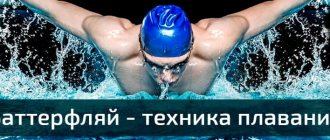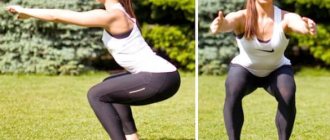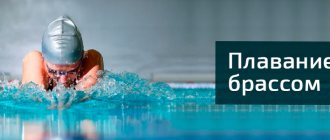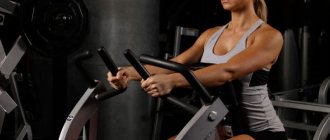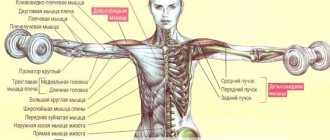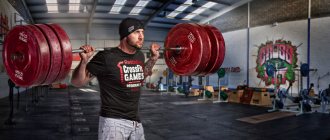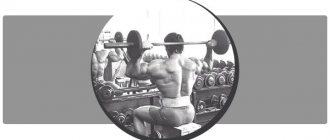Butterfly is swimming with the most spectacular technique, and also one of the most difficult. The style is also called “dolphin”, “butterfly”, or simply “butt”. And indeed, if you look at the swimmer from above, his arm movements will resemble the flapping of a butterfly’s wings, and the oscillations of his body are similar to the swimming technique of dolphins.
The butterfly swimming style in many categories can be characterized by the adjective “most”:
- The most spectacular and spectacular;
- The youngest sport type of swimming;
- The fastest (equivalent to front crawl);
- The most technically challenging;
- The most tedious;
- It has the most contraindications (due to increased load);
- Most useful for losing weight and training muscles;
- Involves the most muscle groups.
Key aspects of working on butterfly style technique
The key aspects of the butterfly style technique include two essential elements - the undulating movement of the body and the arm stroke. They are worked out separately and in combination with each other.
Many highlight the third key point - footwork, however, I consider it a continuation of the wave-like movements of the body. This point of view is quite consistent with the concept of the “front” butterfly technique that is widespread today.
I also recommend reading the article “What muscles work when swimming in a pool?”
What muscles work?
As stated, butterfly is the most physically demanding stroke of swimming, in this style you have to seriously strain your muscles to propel yourself forward.
The main load goes to the following muscle groups:
- shoulders;
- latissimus dorsi muscles;
- press;
- small of the back;
- chest muscles;
- legs (front and back muscles of the thigh, calves).
The key muscle groups involved are shown in this video:
As you can see, almost the entire muscular system of the body is involved - this is a big plus of this type of swimming and its advantage over crawl and breaststroke. The latter also work many muscles (see articles about muscles working in freestyle and breaststroke) - but not to the same extent as in butterfly.
Head position and movement
The head is located in front of the body, cutting through the water during swimming; its position and movement are of the most important nature and require special attention.
It is necessary not only to coordinate the movement of the head with the actions of the hands during inhalation, but also to correctly position it while immersing in water. When tilting your head and immersing yourself in water, the neck muscles should be relaxed and stretched, since water pressure is created on the head tilted down (as a rule, it falls on the area above the forehead), which, in turn, facilitates forward movement.
It is the head that “launches” the wave-like actions of the body with light, repetitive movements or rocking.
The swimmer does not need to make excessive movements with his head, since in this case the neck muscles do not relax, and the water pressure in the area above the forehead does not help the body make forward movement.
As for the inhalation cycle, the head at this moment should deviate as little as possible from the line of forward movement.
Turning technique
Once the athlete has covered the length of the pool, he makes a turn. In this case, first you need to touch the side with slightly bent arms. Then they lift off the side with one hand and begin to turn it towards the opposite bank. Thus, the body follows the hand “automatically”.
After moving the body away from the side with half-bent legs, you need to touch it and turn the body completely, using support under your feet. The body takes a horizontal position on the water, after which a high-quality and strong push is made with the legs from the side.
Hips and effective leg action
Probably the most important thing when performing undulating movements of the body is the balance and completeness of the hips, which includes not only vertical movements, but also thrusts of the pelvis.
It is worth noting that their implementation requires coordinated work of the back muscles during vertical movements and the lower abdominal muscles during pelvic thrusts, which illustrates the importance of the general physical endurance and preparation described above. Poor hip action, especially in propulsion, is commonly seen in swimmers who are unable to perform well using their legs alone. And this seems quite logical.
Effective kicking means that the feet, both when lifting and lowering, are in the correct position to generate movement in the water in a line just opposite the desired forward line of motion. This is achieved in part due to the high flexibility of the foot and ankle area. However, proper hip function is necessary to achieve the desired foot angle.
The legs follow the hips as they move up and down. These actions are accompanied by a natural bending of the legs after the movement of the body. Next, the feet take a position in accordance with this wave-like movement of the body. In the absence of forward-directed work of the hips, the wave-like movement of the body is interrupted, and in order for the feet to take the required position at an angle, the swimmer is forced, making special efforts, to bend his legs at the knees, while with the wave-like movement of the body, the legs bend spontaneously.
This is because the feet, being at the very end of a short wave line (from the knees to the feet, and not from the hips to the feet, which would be more correct), as a result require more bending of the knees to get into position at the desired angle.
This sudden movement of the knees results in unnecessary resistance, not to mention additional stress on the athlete's muscles, and reduces the return on energy applied. In short, bending your knees in the correct wave-like motion allows your feet to move into the correct position and reduces the drag of the water.
Advantages and disadvantages
Let's start with something pleasant - look how many advantages butterfly swimming has:
- As we said above, the technique sets a good load on the muscles. Swimmers can boast of a toned and beautiful body, developed breathing and good endurance. This last skill is important to improve for a wide variety of sports.
- The style does not place any strain on the musculoskeletal system, which means it is suitable for athletes recovering from injuries or sprains.
- High energy consumption stimulates the active burning of calories, which means butterfly helps you lose weight.
- Greater activity improves blood supply, and every cell of the body receives nutrition faster.
- Swimming calms the nervous system, reduces tension, and helps relieve stress.
- The butterfly swimming style allows you to develop high speed;
- It looks incredibly spectacular and impressive.
This technique also has disadvantages:
- It is difficult for her to learn from scratch and without a trainer;
- Due to its high load, the butterfly stroke is not suitable for long-distance swimming;
- Style requires excellent physical shape and ideal health;
- Not suitable for pregnant women and elderly people.
The butterfly style of swimming is prohibited with the following contraindications:
- Acute heart failure;
- Conditions after a heart attack or stroke;
- Recent abdominal surgery;
- Diseases of the respiratory system, including tuberculosis, asthma;
- Acute inflammatory processes, including increased body temperature;
- Digestive disorders;
- Pregnancy.
Expectant mothers are shown calmer swimming styles, such as backstroke or breaststroke. Excessive stress on the upper shoulder girdle, abs and respiratory system can cause undesirable consequences.
Foot push is the final stage of body movement
The thrust of the feet generates the driving force at the end of the wave-like movement.
This push engages the potential of the feet (which are positioned at the correct angle), quadriceps, and hamstrings. This push can be seen as a source of additional driving force or an additional explosive movement that completes the body wave, like the blow of a whip or an exclamation mark at the end of a sentence. In any case, the effectiveness of the push depends on the correct execution of the wave-like movement of the body.
However, there is one very important point - the swimmer needs to monitor the proportionality of the push, since too strong actions of the feet can cause a very strong body wave or excessive bending of the legs at the knees.
The push should be uniform, but at the same time sharp. The negative effects of excessive pushing will be discussed later in this article on pushing coordination and hand work. Below, the term “push” or “leg movement” will be understood as a complete wave-like movement, including the push of the feet at the end of the wave.
Although foot propulsion may seem to depend on the body's wave motion, practicing foot propulsion remains a very important part of a butterfly swimmer's training program. Their special training with the help of special exercises allows you to increase the endurance of the leg muscles, increase the flexibility of the feet and ankles and influences the correct functioning of the hips during wave-like movements.
These exercises can be performed in different positions - on the back, side or stomach using a variety of tools, including boards of different sizes and long, short fins and monofins. Trainers should use monofins regularly, as this can significantly increase the effectiveness of training. Swimming with them helps to master the wave-like movements of the body (especially with the hips), increases the flexibility of the foot, develops the endurance of different muscle groups and streamlines the body.
The sets of exercises described below are designed to help improve the shape of the leg muscles and master or improve the undulating movements of the body and the correct technique of butterfly swimming.
Benefit
It's beautiful and useful!
- Firstly, as mentioned above, almost all significant muscles of the body are involved - this is a very useful and good workout.
- Secondly, swimming in general and butterfly in particular is an aerobic exercise that is beneficial for the cardiovascular system.
- Thirdly, since this type of swimming is physically the most difficult, it requires the greatest energy expenditure - more calories are burned, which helps to lose excess weight.
Since swimming long distances using this method is physically difficult even for trained swimmers, a good option is to combine swimming with this style with others (crawl, breaststroke, backstroke) during training. This will not only make it possible to hold out until the end of the workout, but will also allow you to evenly use all the muscles of our body during exercise.
Exercises
— A series of swims of 3 x 200 meters, the body is extended or moving on the stomach with a board, increasing activity as swims 1-3, 4-6, 7-8 are completed.
— A series of swims of 3 x 100 meters, arms down, covering the distance at maximum speed, best average time.
Movement on the side. The lower arm is extended, the upper arm is lowered, alternating movements of the sides. This exercise allows you to work your hips behind or in front of an imaginary center line of the body.
Working with monofins. Performing pushes for 25 meters, followed by a short rest break, a series of swims of 3 x 100 meters, every 25 or 15 meters movement under water with an extended body position (alternating actions on the back and on the stomach) plus movement on the side, alternating left and right when turning over.
Vertical leg movements with load. Practicing straight vertical movements and balanced hip work.
Push and swim. A series of swims of 3 x 100 meters, the swimmer completes 50 meters using only his legs / 50 meters in the butterfly style, followed by a rest period, gradually increasing the load 1-3, 4-6, 7-8 (the sixth swim must be completed faster than the third, the eighth faster sixth).
Start. You need to do 25 repetitions; odd-numbered swims are performed underwater using only the legs, even-numbered swims are performed in the butterfly style.
Movement only with legs, arms down. The exercise is done in a mask and snorkel with or without monofins. It develops the skills of relaxing the neck muscles in the presence of water pressure, which is created by the forward movement of the head, despite its slight swaying.
Dolphin underwater
In open waters, dolphins often use the underwater swimming style. Some of its features:
- arms are extended like an arrow in front of you;
- the legs and body perform wave-like movements, as in the usual version;
- inhalation is done before diving, usually with greater force and volume;
- exhalation is done under water through the nose.
Hand cycle
The second key point of the butterfly style technique is the cycle of arm movement.
The immersion of both hands in the water follows a recovery period that accompanies the “flying” of the hands out of the water. These actions, together with wave-like movements of the body, constitute the essence of the butterfly style swimming technique. Over the years since the advent of the butterfly stroke, many successful swimmers have demonstrated a wide variety of variations on the basic technique.
Today the most popular is the “front” butterfly technique. In fact, this variation is characterized by focusing on the first part of the stroke or shifting the attention from the area behind the hips (i.e. the legs) to the area before the hips (the upper body). Various characteristics of this style of swimming have been successfully developed and demonstrated by outstanding swimmers and world record holders - Denis Pankratov, Michael Klim and Jenny Thompson. The evolution of Thompson's technique is particularly illustrative of the development of butterfly style technique.
What is the difference
In the classic butterfly stroke, the legs are moved by breaststroke (pulling the hips with the foot spread, pushing and joining the feet). The dolphin appeared during the improvement of the butterfly stroke with a focus on greater swiftness when covering distances. It is believed that the sliding of the legs in it is the most natural.
Dolphin as a swimming style got its name due to the body movements of the athlete, similar to a real frolicking dolphin. This is a high-speed type of butterfly, in which the movement of the connected legs occurs in one plane, resembling the tail of a mammal.
Initial phase of the hand cycle
We will begin our analysis of the arm work characteristic of the butterfly style from the top of the cycle: the hands are extended above the head, the arms are located within the imaginary boundaries coming from the swimmer’s shoulders.
From this position, the arms move in pairs forward and down. The force of the forward movement decreases as the point directly in front of the shoulder line is reached. The arms complete the downward movement at a point located below the corresponding level of the elbows, while the fingertips rotate downward towards the bottom of the pool. At the same time, the palms turn inward, thus positioning themselves along the swimmer's line of motion. This is what the ideal hand position looks like in the “grabbing” position.
After slightly relaxing your arms and bending them at the elbow, the power phase of the stroke begins. It is accompanied by the withdrawal of the arms to a line located directly opposite the intended front line of movement. As the arms move along the chest line, the force of direct pushing of the arms back decreases, the hands turn inward, and the lines of movement of the arms practically intersect at a point just behind the chest line. At this moment, the palms turn and the straight stroke of the arms, which are now close to each other, is resumed.
It is best to start this stroke earlier (approximately at the chest line) rather than later. Moving your arms under your chest makes it easier and faster for them to come out of the water in the final stage of the stroke, which, in turn, reduces the load. The arms maintain an ideal angle for a sufficiently long continuous period of time, as a result the swimmer is able to perform a quick and more efficient release of them from the water. A late stroke leaves less time for “accumulation” of forces to withdraw and restore the arms, which leads to them “sticking” at depth or to an ineffective long stroke.
Basic mistakes
By the way, it would be useful to immediately familiarize yourself with the list of the most popular mistakes that absolutely all beginners make:
- The underwater stroke should be wide and long. Take your time to accelerate - the speed increases only before your hands reach the surface. If the stroke is fast and short, the bend in your torso will increase and you will move forward less;
- The legs should not go outside - all manipulations of the body are performed under water. If your heels still “sparkle” on the surface, then you are creating unnecessary stress for yourself;
- Incorrect breathing - when inhaling, the swimmer pulls his neck forward too much, delaying the stroke. It is important to learn to inhale in a very short period of time, and then, even before surfacing, to be ready to inhale;
- Inconsistency or non-synchronization of movements. Lead to rapid fatigue and slow progress.
Pushing hands and exiting the water
Based on all the information presented above, the next question logically arises: at what point should you reduce the force applied to perform the stroke, and when should you remove your hands from the water?
The arms should push until maximum driving force is maintained just before the natural lift of the fingers, which occurs at the bottom of the stroke. Once the toes begin to rise, the swimmer lowers the hips, leaving the arms unable to generate propulsive force by pushing through the water. Removing the arms from it during a “late” stroke is delayed, since the athlete does not have enough time to accumulate the forces required for a quick and effective transition to the recovery phase.
When using the "front" technique of the butterfly style, the arms push the water only to the end point, allowing maximum driving force to be generated rather than wasting energy on an inefficient long stroke. It is also worth noting that thanks to the early stroke, the swimmer has the opportunity to build up the strength to quickly and efficiently remove the arms from the water and enter the recovery phase.
How to learn?
The instructions on “how to swim butterfly style quickly” come down to just one piece of advice - follow the correct technique of movements. Accurate adherence to its aspects will literally force your body to perform the correct manipulations. It itself will intuitively correctly understand how to make a wave, when to inhale air, at what moment to go under water. It's like with balance - if you catch it once, you won't fall off the bike again.
An analysis of the butterfly swimming technique shows that it has absorbed all the best from the freestyle and breaststroke, seasoning everything with its own unique spice. The result was something very interesting - more powerful, no less fast, and certainly spectacular.
Until you have mastered crawl or breaststroke swimming, it is too early to move on to the butt. If there are no difficulties with the first two, increase your speed and develop endurance. Gradually try the butterfly technique. By the way, men love this style more, because it allows them to demonstrate their excellent physical shape and strong training in a favorable light.
Recovery phase
Proper arm release (in addition to the timely follow-up of the legs, which we will discuss later) helps the swimmer build up the energy to swing the arms out of the water. They thus maintain the position they assume during the stroke and recovery phases.
At this moment it is very important to relax your hands. Their compression or bending slows down the exit from the water. Also, such actions make it difficult for the forward movement of the arms and shoulders at the top of the relaxation phase before immersing the arms in the water. They should be as relaxed as possible, falling “dead weight” into the water. Thus, the swimmer has the opportunity to accumulate the greatest inertia to enter the water and begin a new stroke.
For the “front” butterfly style technique, relaxation of the arms, their ideal entry into the water, combined with maximum efficiency of the stroke and quick exit from the water, allows for a quick transition to the power phase of the stroke and a more uniform forward movement.
What is Butterfly?
Butterfly is swimming on the chest with simultaneous synchronized movements of the right and left limbs. The swimmer should lift part of the body to the surface and use both hands to make a massive stroke to lift the body above the water.
What is Butterfly?
At the same time, you need to bring your legs together and synchronously perform peculiar strikes with them. From English butterfly is translated as “butterfly”. This style is also sometimes called “Dolphin”, it is among the most exhausting and difficult to perform, but nevertheless it is almost the fastest.
Head movement - breathing and exhalation cycles
The swimmer must ensure the correct position of the head - the face is directed downward, the neck muscles are relaxed.
The position of the head is very important during the inhalation and exhalation cycles. At the very beginning of the stroke, it rises slightly and remains in this position during the stroke with the arms. Then it begins to fall when the swimmer's arms leave the water, and continues to do so during the arm relaxation phase. During the inhalation cycle, head movements are of a similar nature, except that in this case a slightly higher stroke intensity is required. This allows the head to rise higher so the swimmer can inhale. It is worth noting that, as with the exhalation cycle, the head should remain in its original position for as long as possible. As a result, when inhaling, the head bends slightly forward.
The traditional inhalation technique involves raising the head to inhale, which loads the neck muscles, the chin rises forward, this entails further lifting of the head. In the lowered position, the neck and head remain relaxed and are closer to the line of forward movement. Bending your head generates much less lifting and lowering work during inhalation compared to the traditional inhalation technique.
If you look from the outside, a similar inhalation technique (I mean slightly bending the head) is typical for swimmers using the “front” stroke technique. For example, Pankratov, Klim and Thompson. When viewed from the front, this inhalation technique leaves less of the head visible (especially the chin). If you look at Pankratov, for example, from behind, it will be very difficult to distinguish these slight bends of the head during inhalation, which are accompanied by its limited movements up and down (the head has a more or less constant angle) from movements of the head during exhalation.
This is another benefit of slightly tilting your head while inhaling. This movement generates less strain on the neck muscles, and the arms and shoulders assume a more relaxed position during the relaxation phase before lowering into the water.
Breathing while swimming butterfly
Swimming must be accompanied by proper breathing - this is necessary to avoid shortness of breath and increased blood pressure.
Inhale
Inhalation occurs at the moment when the swimmer's shoulder girdle rises above the water level. Therefore, you should inhale when moving the upper limbs after the stroke to the starting position. At this time, the swimmer should raise his head, look at the side of the pool and extend his arms forward for the next stroke. At the same time, take a deep and quick breath.
Exhalation
Exhale through your mouth and nose in order to do it quickly. Exhalation occurs sharply when both the nose and mouth are involved simultaneously. Otherwise, water will enter the respiratory tract and the novice swimmer may suffocate. Exhale immediately after raising your head above the water level.
Beginner swimmers do this every time - every cycle of lifting the shoulder girdle out of the water. Athletes follow a “double” cycle, when exhalation occurs every two lifts. In this way, energy is conserved, which leads to faster movement of the limbs.
Putting your hands in the water
Remember how we talked about the arms falling forward in the direction of movement, and the head and neck lowering into the water.
It is necessary to ensure the simultaneous lowering of the arms and head into the water (this is observed during the exhalation cycle, when the head returns to its original position).
Thus, according to the theory of stroke analyst Bill Boomer, the head and arms, when lowered into the water at the same time, generate greater driving force. This “mass throwing” effect is enhanced by the additional energy created by dropping your hands into the water and bending your head forward.
The hands enter the water inside the lines that extend from the swimmer's shoulders with arms outstretched. Relaxing them is very important because it allows you to generate additional driving force while lifting your hips and tilting your head forward.
At this point, the wrists begin to move down and out and a new stroke cycle begins. To do this you need to have strong hands.
Sports start
The sports start for butterfly is the same as for crawl - jumping from a side or a bedside table with your head into the water.
The starting position for starting is standing, legs slightly bent, body lowered at 90° or parallel to the water line, feet parallel to each other, the distance between them is approximately 20 centimeters.
The fingers are on the line of the side or pedestal, the arms are placed back or forward in a straight line, so that the fingers are close to the edge of the support surface.
During the jump, the swimmer powerfully pushes off the land with his legs, straightens them and dives into the water, stretching his arms above his head.
You need to dive not too shallow, but not to the bottom , the ideal angle of inclination of the body is 20-30°, it provides optimal diving depth and distance for sliding. The slide is first directed slightly downwards, then along a horizontal line, and then towards the surface of the water. If you have problems with diving, you can help yourself with your hands by using them to stroke from a position above your head to a position along your torso, towards your pelvis. Sliding is useful because during it the hands receive minimal load.
Wave-like body movement and hand cycle
For each cycle of arm work, there are two wave-like movements of the body - one “wave” accompanies the front phase of the stroke, that is, lowering the hands into the water and tilting the head, and the second “wave” occurs during the completion of the stroke.
There are successful swimmers who limit themselves to one wave-like movement and, as a rule, specialize in distances of 200 meters, but this is rather the exception. Hand work combined with constant periodic wave-like movements of the body allows you to achieve maximum efficiency. It is worth noting that foot thrusts should be sharp and directed along the main “wave” of the body. Excessive “reliance” on the second wave-like movement, when the arms complete the stroke phase, is characteristic of swimmers with a late stroke technique. As a result, we not only have an excessive load, but also a disruption in the rhythm of the hands and body.
With the “front” technique, the second “wave” is no different from the first and remains effective. It supports, rather than undermines, the most important moment when the arms come out of the water and enter the recovery phase, allowing you to better prepare for the power stage of the new stroke.
Video with butterfly swimming technique
Training video for beginners
This video tutorial shows the techniques of professionals in slow motion:
And here you can look at this style performed by the most titled swimmer - Michael Phelps:
As you can see, dolphin is not only a complex, but also an interesting style, having mastered which, you will be able to train many muscle groups, as well as increase your endurance. But remember that swimming in only one style during a lesson can lead to muscle clogging and fatigue, because for more effective development it is recommended to alternate different styles and do not forget about rest to restore pulse and breathing.
